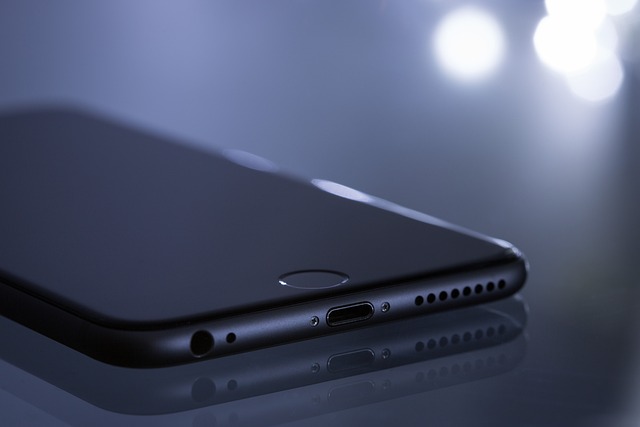To determine if replacing your iPhone battery is necessary, regularly check its health via the Battery Health feature in iOS. A battery with less than 80% capacity might show reduced usage times or cause unexpected shutdowns. Replacing an iPhone battery can enhance performance and extend device life, potentially saving you from a full device replacement. The cost of an official Apple battery replacement ranges from $60 to $140, whereas third-party alternatives offer a more economical option that may require careful selection for quality. Official batteries come with a warranty and ensure compatibility, but they are generally more expensive than third-party options. Consider the iPhone model's complexity, service provider rates, and geographic location when assessing costs. Weigh the long-term reliability against immediate savings, keeping in mind that newer iPhone models have pricier batteries. Check Apple's warranty policy for coverage on battery service; after a year, if your battery holds less than 80% capacity, you may qualify for a replacement at a fee. For those with AppleCare+, the cost is reduced. Opting for an OEM battery can lead to long-term savings and avoid unexpected device failures. Regular software updates and power-saving modes can also help extend your iPhone's battery life. Proactively replacing your iPhone battery can be a cost-effective solution compared to dealing with a dead phone in an emergency.
Considering the longevity and performance of your iPhone hinge on the health of its battery, understanding the costs associated with replacements is crucial for any tech-savvy user. This guide delves into the intricacies of iPhone battery replacement, including interpreting health indicators, conducting a cost-benefit analysis, and exploring factors that influence pricing. We compare official versus third-party replacements to help you make an informed decision. Additionally, we cover warranty and coverage details for iPhone batteries and offer practical tips to minimize expenses when replacing your battery. Whether you’re looking to replace your iPhone battery or simply want to maintain its optimal condition, this article equips you with the knowledge needed to make cost-effective decisions.
- Understanding Battery Health Indicators in iPhones
- The Cost-Benefit Analysis of Replacing an iPhone Battery
- Factors Influencing the Price of an iPhone Battery Replacement
- Official vs. Third-Party Battery Replacements: A Comparative Overview
- Warranty and Coverage for iPhone Batteries: What's Included?
- Tips for Minimizing Battery Replacement Costs for iPhones
Understanding Battery Health Indicators in iPhones

When contemplating whether to replace an iPhone battery, it’s crucial to have a grasp of the device’s battery health indicators. Apple provides users with a detailed overview of their iPhone’s battery performance within the Settings app under Battery Health. This feature includes a percentage indicating the current maximum capacity relative to when the battery was new and a notice if the battery’s ability to hold a charge is significantly reduced from its original specifications. Understanding these indicators can help you determine if a battery replacement is necessary, as an iPhone with a battery that falls below 80% of its original capacity may start to experience diminished performance, such as shorter usage times between charges or unexpected shutdowns during peak power demands. Regularly monitoring these health metrics through the Battery Health section can guide your decision to replace your iPhone battery, ensuring your device continues to operate efficiently and effectively. Keep in mind that replacing an iPhone battery can restore its longevity and performance, often extending its useful life significantly. This not only enhances user experience but also avoids the need for a more costly device replacement.
The Cost-Benefit Analysis of Replacing an iPhone Battery

When considering the replacement of an iPhone battery, a cost-benefit analysis becomes crucial to determine if this investment is financially prudent for your device’s longevity and performance. Replacing an iPhone battery can range from approximately $60 to $140, depending on whether you opt for an official Apple replacement or a third-party alternative. The benefits of a new battery are clear: extended battery life, improved device functionality, and the avoidance of potential issues arising from a degraded battery, such as unexpected shutdowns or reduced performance.
Before proceeding with the replacement, it’s advisable to assess your iPhone’s usage patterns and battery health. Utilizing the ‘Battery Health’ feature in iOS can inform you of the maximum capacity of your battery and whether it significantly impacts your user experience. If you frequently rely on your iPhone for tasks that drain the battery quickly—like long trips without charging options or intensive app use—a replacement battery could mean the difference between a reliable companion and a constant source of frustration. Additionally, considering the average lifespan of an iPhone with a new battery can extend from 18 to 30 months, the cost of replacing the battery is often a worthwhile investment that extends the useful life of your device. This analysis should factor in the potential need for other repairs or upgrades, as well as the value of the iPhone model you own, to make an informed decision about whether to replace your iPhone battery.
Factors Influencing the Price of an iPhone Battery Replacement

When considering a battery replacement for an iPhone, several factors influence the overall cost. The most significant factor is the iPhone model itself; newer models typically have batteries that are more complex to manufacture and handle, which can drive up the replacement costs. For instance, an iPhone 13 battery replacement might be pricier than that of an older model due to advancements in technology and materials. Additionally, the service provider you choose will also impact the price. Apple’s official service centers offer a standardized replacement process with a warranty and genuine parts, which can be more expensive compared to third-party services. However, opting for unauthorized service providers might seem cost-effective initially but could lead to issues with device functionality or future repairs. Another factor to consider is the location of the repair service; regions with higher living costs typically have higher labor rates, thus increasing the total price of the replacement. Lastly, the availability of original equipment manufacturer (OEM) parts versus third-party batteries plays a role in pricing. OEM parts are often required for warranty purposes and guarantee compatibility and longevity but come at a premium. In contrast, third-party options can be less costly but may not offer the same reliability or warranty as genuine parts. For those looking to replace their iPhone battery with a focus on cost-effectiveness, it’s advisable to weigh the pros and cons of each option, considering both short-term savings and long-term device health.
Official vs. Third-Party Battery Replacements: A Comparative Overview

When the time comes to replace your iPhone battery, a decision between official and third-party options awaits. Official replacements, directly from Apple or its authorized service providers, offer the assurance of using genuine parts that are designed to work seamlessly with your device. This ensures optimal performance and can potentially extend the lifespan of your iPhone. However, such services come at a higher cost, reflecting the brand’s reputation for quality and reliability. On the other hand, third-party options provide a more economical alternative, allowing consumers to save money while still receiving a functional battery replacement. These providers often use compatible parts that undergo rigorous testing to match the performance of original components. While the initial investment may be lower with third-party services, it’s crucial to research and choose reputable vendors to avoid potential issues such as reduced battery life or device malfunctions. For those considering an iPhone battery replacement, weighing the pros and cons of each option will guide you in making a cost-effective decision that aligns with your needs and budget. Keep in mind that both options have their merits; official replacements promise original quality and warranty, whereas third-party services offer a more affordable route to rejuvenate your device’s performance.
Warranty and Coverage for iPhone Batteries: What's Included?

When considering a replacement for your iPhone battery, understanding the warranty and coverage provided by Apple is crucial for both budgeting and ensuring that your device operates at its best. Apple offers a one-year limited warranty for all new iPhone purchases, which includes battery service if it’s compromised due to a manufacturing defect. However, after this initial period, users can opt to replace their iPhone battery under the standard battery warranty. This warranty covers batteries that hold less than 80 percent of their original capacity, which is determined by the on-device battery health reporting feature available in the Settings app. It’s important to note that accidental damage or unauthorized repairs may void this coverage, so it’s advisable to seek official Apple service or authorized service providers for any maintenance or replacements.
For those looking to replace their iPhone battery beyond the initial warranty period, Apple provides an out-of-warranty replacement service. The cost of this service varies depending on the iPhone model, with third-generation and later devices typically ranging from $69 to $88 for an out-of-warranty battery replacement as of the latest information available. This fee is subject to change, so it’s recommended to verify the current pricing directly through Apple or an authorized service provider. Additionally, if your iPhone falls under eligible AppleCare+ plans, you may be able to get a battery replacement for a lower service fee. Therefore, assessing your device’s warranty status and available coverage is a prudent step before deciding to replace your iPhone battery.
Tips for Minimizing Battery Replacement Costs for iPhones

When considering the replacement of an iPhone battery, proactive maintenance can significantly mitigate costs over time. One of the most effective strategies to minimize expenses associated with replacing an iPhone battery is to invest in a high-quality original equipment manufacturer (OEM) battery rather than third-party alternatives. OEM batteries are designed specifically for your iPhone model and ensure compatibility and longevity. Additionally, they often come with a warranty that can save you from future outlays should the battery fail prematurely. Regular software updates can also play a pivotal role in extending battery life by optimizing power usage.
Another tip to reduce the financial impact of iPhone battery replacements is to keep an eye on the battery’s health through the Battery Health feature available on iPhones with iOS 13 or later. By understanding your battery’s condition, you can plan for a replacement before the phone becomes unresponsive, which typically happens suddenly and may necessitate emergency service at higher costs. Furthermore, utilizing power-saving modes and being mindful of app permissions that drain battery life can contribute to longer battery longevity, thereby postponing the need for a costly replacement. Regularly replacing your iPhone’s battery as recommended can be more budget-friendly in the long run compared to dealing with a dead phone and its potential repair or replacement costs.
When considering the replacement of an iPhone battery, it’s crucial for users to weigh their options and understand the associated costs. This guide has navigated through the intricacies of battery health indicators, the economic advantages and drawbacks of a battery replacement, the factors affecting the price of these replacements, and the stark contrast between official and third-party services. Additionally, it highlighted the importance of warranty and coverage for iPhone batteries, offering valuable tips to minimize costs. For those looking to replace their iPhone battery, this comprehensive overview empowers you with the knowledge to make informed decisions and manage expenses effectively.
